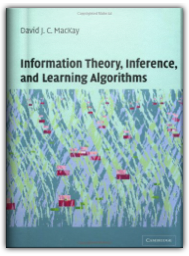
Information theory and inference, often taught separately, are here united in one entertaining textbook. These topics lie at the heart of many exciting areas of contemporary science and engineering - communication, signal processing, data mining, machine learning, pattern recognition, computational neuroscience, bioinformatics, and cryptography. This textbook introduces theory in tandem with applications. Information theory is taught alongside practical communication systems, such as arithmetic coding for data compression and sparse-graph codes for error-correction. A toolbox of inference techniques, including message-passing algorithms, Monte Carlo methods, and variational approximations, are developed alongside applications of these tools to clustering, convolutional codes, independent component analysis, and neural networks. The final part of the book describes the state of the art in error-correcting codes, including low-density parity-check codes, turbo codes, and digital fountain codes — the twenty-first century standards for satellite communications, disk drives, and data broadcast. Richly illustrated, filled with worked examples and over 400 exercises, some with detailed solutions, David MacKay's groundbreaking book is ideal for self-learning and for undergraduate or graduate courses. Interludes on crosswords, evolution, and sex provide entertainment along the way. In sum, this is a textbook on information, communication, and coding for a new generation of students, and an unparalleled entry point into these subjects for professionals in areas as diverse as computational biology, financial engineering, and machine learning. 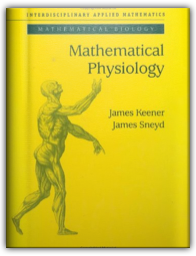
Mathematical Physiology provides an introduction into physiology using the tools and perspectives of mathematical modeling and analysis. It describes ways in which mathematical theory may be used to give insights into physiological questions and how physiological questions can in turn lead to new mathematical problems. 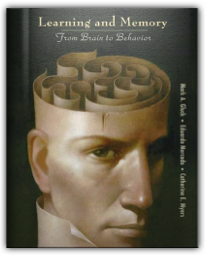
Gluck, Mercado and Myers’s Learning and Memory is the first textbook developed from its inception to reflect the convergence of brain studies and behavioral approaches in modern learning and memory research incorporating findings both in animals and humans. Each chapter integrates coverage of both human memory and animal learning, with separate sections specifically devoted to behavioral processes, brain systems, and clinical perspectives. 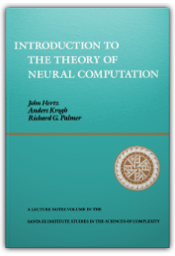
Comprehensive introduction to the neural network models currently under intensive study for computational applications. It also provides coverage of neural network applications in a variety of problems of both theoretical and practical interest. DLC: 1. Neural computers. 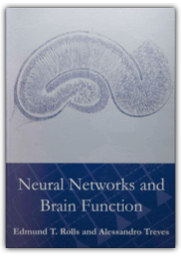
This book describes the types of computation that can be performed by biologically plausible neural networks and shows how they may be implemented in different systems of the brain. It is structured in three sections, each of which addresses a different need. The first introduces and analyzes the operation of several fundamental types of neural networks. The second discusses real neural networks in several brain systems, and shows how it is becoming possible to construct theories about the way different parts of the brain work. This section also analyzes the various neuroscience and neurocomputation techniques that need to be combined to ensure further progress in understanding the mechanism of brain processes. The third section, a collection of appendices. introduces the formal quantitative approaches to many of the networks described. Neural Networks and Brain Function is an accessible, clear introduction for researchers and students in neuroscience and artificial intelligence to the fascinating problems of how the brain works and how behavior is determined. 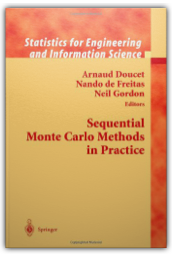
Monte Carlo methods are revolutionizing the on-line analysis of data in many fileds. They have made it possible to solve numerically many complex, non-standard problems that were previously intractable. This book presents the first comprehensive treatment of these techniques. 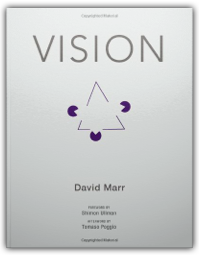
David Marr's posthumously published Vision (1982) influenced a generation of brain and cognitive scientists, inspiring many to enter the field. In Vision, Marr describes a general framework for understanding visual perception and touches on broader questions about how the brain and its functions can be studied and understood. Researchers from a range of brain and cognitive sciences have long valued Marr's creativity, intellectual power, and ability to integrate insights and data from neuroscience, psychology, and computation. This MIT Press edition makes Marr's influential work available to a new generation of students and scientists. In Marr's framework, the process of vision constructs a set of representations, starting from a description of the input image and culminating with a description of three-dimensional objects in the surrounding environment. A central theme, and one that has had far-reaching influence in both neuroscience and cognitive science, is the notion of different levels of analysis—in Marr's framework, the computational level, the algorithmic level, and the hardware implementation level. Now, thirty years later, the main problems that occupied Marr remain fundamental open problems in the study of perception. Vision provides inspiration for the continuing efforts to integrate knowledge from cognition and computation to understand vision and the brain. |
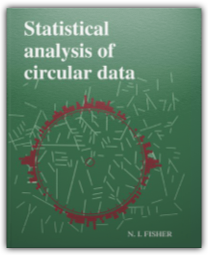
This book provides a unified and up-to-date account of techniques for handling circular data, and will interest all who perform data analyses. 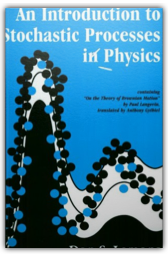
This book provides an accessible introduction to stochastic processes in physics and describes the basic mathematical tools of the trade: probability, random walks, and Wiener and Ornstein-Uhlenbeck processes. It includes end-of-chapter problems and emphasizes applications. 
This book applies methods from nonlinear dynamics to problems in neuroscience. It uses modern mathematical approaches to understand patterns of neuronal activity seen in experiments and models of neuronal behavior. The intended audience is researchers interested in applying mathematics to important problems in neuroscience, and neuroscientists who would like to understand how to create models, as well as the mathematical and computational methods for analyzing them. The authors take a very broad approach and use many different methods to solve and understand complex models of neurons and circuits. They explain and combine numerical, analytical, dynamical systems and perturbation methods to produce a modern approach to the types of model equations that arise in neuroscience. There are extensive chapters on the role of noise, multiple time scales and spatial interactions in generating complex activity patterns found in experiments. The early chapters require little more than basic calculus and some elementary differential equations and can form the core of a computational neuroscience course. Later chapters can be used as a basis for a graduate class and as a source for current research in mathematical neuroscience. The book contains a large number of illustrations, chapter summaries and hundreds of exercises which are motivated by issues that arise in biology, and involve both computation and analysis. Bard Ermentrout is Professor of Computational Biology and Professor of Mathematics at the University of Pittsburgh. David Terman is Professor of Mathematics at the Ohio State University. “This excellent 422 page hardcover publication is an accessible and concise monograph. … Mathematical Foundations is a timely contribution that will prove useful to mathematics graduate students and faculty interested in the application of dynamical systems theory to cellular and systems neuroscience. … welcome addition to the pedagogical literature. … For mathematics graduate students who are investigating the field of computational neuroscience, I would highly recommend Mathematical Foundations of Neuroscience as their first computational neuroscience text.” (Gregory D. Smith, The Mathematical Association of America, December, 2010) "...it is a good substitute for a lengthy regime of abstract maths classes, but it is also well integrated into the field of neuroscience. Ermentrout and Terman's book conveys much of the advanced mathematics used in theoretical neuroscience today." (Vincent A. Billock, Nature) 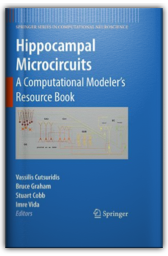
Rich in detail, Hippocampal Microcircuits: A Computational Modeler’s Resource Book provides succinct and focused reviews of experimental results. It is an unparalleled resource of data and methodology that will be invaluable to anyone wishing to develop computational models of the microcircuits of the hippocampus. The editors have divided the material into two thematic areas. Covering the subject’s experimental background, leading neuroscientists discuss the morphological, physiological and molecular characteristics as well as the connectivity and synaptic properties of the various cell types found in the hippocampus. Here, ensemble activity, related to behavior, on the part of morphologically identified neurons in anesthetized and freely moving animals, lead to insights into the functions of hippocampal areas. In the second section, on computational analysis, computational neuroscientists present models of hippocampal microcircuits at various levels of detail, including single-cell and network levels. A full chapter is devoted to the single-neuron and network simulation environments currently used by computational neuroscientists in developing their models. In addition to the above, the chapters also identify outstanding questions and areas in need of further clarification that will guide future research by computational neuroscientists. 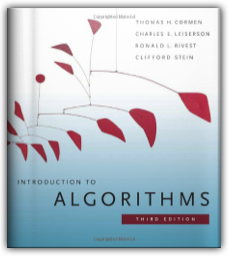
Some books on algorithms are rigorous but incomplete; others cover masses of material but lack rigor. Introduction to Algorithms uniquely combines rigor and comprehensiveness. The book covers a broad range of algorithms in depth, yet makes their design and analysis accessible to all levels of readers. Each chapter is relatively self-contained and can be used as a unit of study. The algorithms are described in English and in a pseudocode designed to be readable by anyone who has done a little programming. The explanations have been kept elementary without sacrificing depth of coverage or mathematical rigor.The first edition became a widely used text in universities worldwide as well as the standard reference for professionals. The second edition featured new chapters on the role of algorithms, probabilistic analysis and randomized algorithms, and linear programming. The third edition has been revised and updated throughout. It includes two completely new chapters, on van Emde Boas trees and multithreaded algorithms, substantial additions to the chapter on recurrence (now called "Divide-and-Conquer"), and an appendix on matrices. It features improved treatment of dynamic programming and greedy algorithms and a new notion of edge-based flow in the material on flow networks. Many new exercises and problems have been added for this edition. As of the third edition, this textbook is published exclusively by the MIT Press. 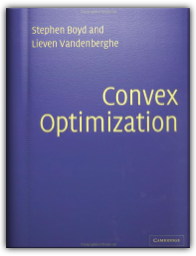
Convex optimization problems arise frequently in many different fields. A comprehensive introduction to the subject, this book shows in detail how such problems can be solved numerically with great efficiency. The focus is on recognizing convex optimization problems and then finding the most appropriate technique for solving them. The text contains many worked examples and homework exercises and will appeal to students, researchers and practitioners in fields such as engineering, computer science, mathematics, statistics, finance, and economics. 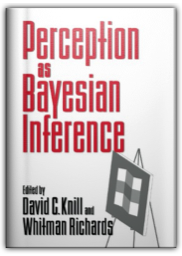
In recent years, Bayesian probability theory has emerged not only as a powerful tool for building computational theories of vision, but also as a general paradigm for studying human visual perception. This book provides an introduction to and critical analysis of the Bayesian paradigm. Leading researchers in computer vision and experimental vision science describe general theoretical frameworks for modeling vision, detailed applications to specific problems and implications for experimental studies of human perception. The book provides a dialogue between different perspectives both within chapters, which draw on insights from experimental and computational work, and between chapters, through commentaries written by the contributors on each other's work. Students and researchers in cognitive and visual science will find much to interest them in this thought-provoking collection. |

Máté Lengyel
Collection Total:
201 Items
201 Items
Last Updated:
May 28, 2012
May 28, 2012

 Made with Delicious Library
Made with Delicious Library